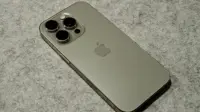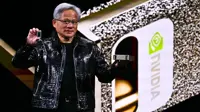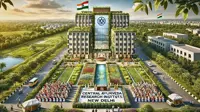Slices of PC sales growth
By Our infotech bureau | 07 Jan 2004
New Delhi: The Indian PC market expanded 32 per cent to 12.58 lakh in the six months ended Sept 2003, according to MAIT, the association of hardware, training and R&D services sectors of the Indian IT industry. MAIT expects PC sales for the full year to touch 3 million, with strong volume growth coming from the smaller cities and towns, and medium and small businesses.
PRODUCTS Notebook sales: Sales of notebooks improved due to a 155 per cent increase in consumption over H1/2002-03 in medium-sized enterprises which account for 41 per cent of the market. Compared to the first-half in the previous year, sales grew only 7 per cent in large enterprises whose proportion shrunk from 51 per cent to 39 per cent. Notebook sales in small businesses grew by 11 per cent.
Notebook sales: Sales of notebooks improved due to a 155 per cent increase in consumption over H1/2002-03 in medium-sized enterprises which account for 41 per cent of the market. Compared to the first-half in the previous year, sales grew only 7 per cent in large enterprises whose proportion shrunk from 51 per cent to 39 per cent. Notebook sales in small businesses grew by 11 per cent.
Servers: The server market registered a negative growth of 11 per cent over H1/2002-03 despite strong growth in Class B and Class C towns. The 'next 4 cities'(Bangalore, Hyderabad, Ahmedabad, Pune ) accounted for an impressive growth of 206 per cent while in the other smaller towns the consumption grew by 192 per cent. However, with 65 per cent of the total server sales, the 4 metros (New Delhi, Mumbai, Chennai, Calcutta) showed a decline of 36 per cent. In the larger businesses segment server sales slumped by 12 per cent and in the smaller businesses by 67 per cent. However, Medium-sized Businesses witnessed an increase in consumption by 48 per cent, accounting for 56 per cent of the total market, while larger businesses accounted for 31 per cent and the small for another 13 per cent.  Networking: In the networking market, sales of modems improved by 67 per cent, while that of hubs and NICs by 6 per cent and 23 per cent respectively. In the households segment, accounting for 66 per cent of the total modems market, consumption grew by 47 per cent and only 5 per cent in the businesses segment.
Networking: In the networking market, sales of modems improved by 67 per cent, while that of hubs and NICs by 6 per cent and 23 per cent respectively. In the households segment, accounting for 66 per cent of the total modems market, consumption grew by 47 per cent and only 5 per cent in the businesses segment.
UPS systems: The market for uninterrupted power supply systems grew 9 per cent over H1/2002-03. The 'Next 4' cities led consumption by 60 per cent followed by other smaller towns with 38 per cent, while sales declined in the metros by 19 per cent. Households, with a 53 per cent of the UPS market, registered an impressive growth of 69 per cent over H1/2002-03. In this market, too, the businesses segment registered a negative growth of 22 per cent resulting in 47 per cent market share.
Monitors: Consumption of monitors surged to 1.25 million units — a growth of 28 per cent over H1/2002-03. The market for 15 inch monitors grew by 74 per cent accounting for 54 per cent of the market; up from 41 per cent in H1 last year. The proportion of 17 inch monitors improved from 11 per cent to 14 per cent registering, a growth of 57 per cent. The share of 14 inch monitors declined from 46 per cent to 29 per cent, a drop of 20 per cent.
Internet: The number of active internet subscribers (entities) increased to 1.76 million in September 2003, from 1.43 million six months earlier in March 2003. Internet penetration among businesses was 45 per cent, while that of households was 10 per cent. The businesses segment now accounts for 43 per cent of the total active Internet entities while households account for the remaining 57 per cent. Though dial-up remains the most commonly used means of accessing the internet among businesses, it dropped within a year from 71 per cent to 61 per cent in September 2003. During the same period, the proportion of access through cable links increased from 9 per cent to 19 per cent, of ISDN from 10 per cent to 13 per cent and leased lines from 6 per cent to 8 per cent.
GEOGRAPHICAL SPREAD
Growth in sales of PCs in smaller towns and cities continued unabated in 2003-04. Sales grew 42 per cent in class B and C cities, accounting for half the PCs sold in the first six months, compared with 46 per cent in the first half last year. Consumption of notebooks grew a whopping 246 per cent in class B cities, which made up 17 per cent of the total market. In server sales, while overall sales registered negative growth, class B cities registered a growth of 206 per cent and class C 192 per cent. In the UPS market, while sales dropped in the top four cities, increased sales in class B and C cities resulted in an overall growth of 9 per cent.
While the share of the four metros decreased to 50 per cent from 53 per cent in H1/2002-03, actual numbers rose 24 per cent. Sales in the next four cities grew 62 per cent and accounted for a of 13 per cent share, against 11 per cent earlier. In other smaller cities, PC sales increased 36 per cent., representing a 37 per cent share.
MARKET SEGMENT
Business segment: In the businesses segment, although the four metros accounted for the highest volume of PC sales, their share declined from 53 per cent to 46 per cent. This drop was made up by an increased proportion in growth from the 'next 4 cities' and the other smaller cities. Consumption in the 'next 4 cities' grew by 57 per, translating in to an 11 per cent share of the market while in other smaller cities it grew by 33 per cent accounting for 43 per cent of the market.
Retailing: The growth of organised retailing (supermarkets, hyper markets, shopping malls, multiplexes etc) and growth of retail chains resulted in growth of demand for IT products. IT consumption increased not only among the large organised retail players but also in smaller retail outlets.
Households: In the household segment, SEC A (the four metros) continued to dominate the market with a 43 per cent market share and SEC B (the mini metros) with 37 per cent, recorded a growth of 68 per cent and 58 per cent respectively in the first half of 2003-04. Sales in the SEC C (other large cities and towns segment) surged by 373 per cent making up 20 per cent of the market. Significant growth in the SEC C and other SECs (remaining cities and towns) was in response to the drop in prices of IT products. Significant sales in the households segment also resulted in large growth in the share of the assembled market. The growth of IT consumption in the household segment is expected to remain steady as the vendors have started positioning and promoting PC as an aid for education and entertainment.
Latest articles
Featured articles

The life and times of Manmohan Singh, former Prime Minister of India
By Cygnus | 28 Dec 2024
On 27th December 2024 India and the world lost one of their finest statespersons in a hundred years. Manmohan Singh, born on 26th September 1932, in Gah, Punjab (now in Pakistan)

The remarkable Ratan Tata
By Kiron Kasbekar | 23 Oct 2024
One newspaper report of Ratan Tata’s passing away showed an old photo of him climbing into the cockpit of a Lockheed Martin F-16 fighter.

Lighter than air, yet very, very powerful
By Kiron Kasbekar | 03 Jan 2024
In March 2013 Chinese scientists pulled off a remarkable feat. They created the world’s lightest aerogel. Tipping the scales at a mere 0.16 milligrams per cubic centimeter – that’s a sixth of the weight of air!

COP28 explained: A closer look at COP28's climate change solutions
By Aniket Gupta | 27 Dec 2023
The 28th United Nations Climate Change Conference, also known as COP28, took place from 30th November 2023, to 13th December 2023, at Expo City in Dubai, United Arab Emirates.

What is a Ponzi scheme?
By Aniket Gupta | 06 Dec 2023
Ponzi schemes have long captivated the public imagination, drawing unsuspecting investors into a web of illusion and deception.

The Rise and Rise of HDFC Bank
03 Jul 2023
HDFC, which surged ahead of global majors like HSBC Holdings Plc and Citigroup Inc and left Indian peers like State Bank of India and ICICI Bank in market capitalisation, now ranks fourth largest among the world’s most valuable banks, after JPMorgan Chase & Co, Industrial and Commercial Bank of China Ltd and Bank of America Corp

India’s Millet Revolution To Enrich Global Food Basket
02 Apr 2023
Millets, a healthier and cheaper substitute to wheat and rice, are indigenous to many parts of the world, especially in the semiarid tropics of Asia and Africa, and offers a big scope for expanding production and consumption in the foodgrain deficient African continent

Market predator Hindenburg preys on Adani stock
06 Mar 2023
Almost a month after the damning report of short-seller Hindenburg Research on the Adani Group that claimed that the seven stocks within the group were about 85 per cent overvalued, one of the group's stocks, Adani Total Gas, closed at Rs835 on the BSE, down nearly 79 per cent from its 24 January level, almost close to reaching that valuation
Business History Videos

History of hovercraft Part 3...
By Kiron Kasbekar | Presenter: Kiron Kasbekar

History of hovercraft Part 2...
By Kiron Kasbekar | Presenter: Kiron Kasbekar

History of Hovercraft Part 1...
By Kiron Kasbekar | Presenter: Kiron Kasbekar


.webp)



















